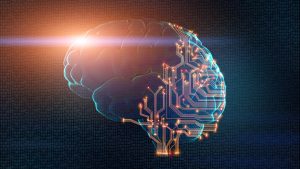
“Brain-like” computing device uses polymers to simulate human learning
Canadian Plastics
Research & Development"Synaptic transistors" mimic the brain’s plasticity by simultaneously processing, storing data.

Image Credit: Prostock-studio/Adobe Stock
Borrowing a page from the playbook of physiologist Ivan Pavlov – who famously conditioned dogs to associate a bell with food – researchers at Northwestern University and the University of Hong Kong have used a conductive, plastic material to develop a brain-like computing device that associates light with pressure, and which is capable of learning by that association.
The key to the device is its novel organic, electrochemical “synaptic transistors,” which simultaneously process and store information just like the human brain. The researchers demonstrated that the transistor can mimic the short-term and long-term plasticity of synapses in the human brain, building on memories to learn over time.
With its brain-like ability, the novel transistor and circuit could potentially overcome the limitations of traditional computing, including their energy-sapping hardware and limited ability to perform multiple tasks at the same time. The brain-like device also has higher fault tolerance, continuing to operate smoothly even when some components fail.
“Although the modern computer is outstanding, the human brain can easily outperform it in some complex and unstructured tasks, such as pattern recognition, motor control and multisensory integration,” said research team member Jonathan Rivnay of Northwestern University, which is in Evanston, Ill. “This is thanks to the plasticity of the synapse, which is the basic building block of the brain’s computational power. These synapses enable the brain to work in a highly parallel, fault tolerant and energy-efficient manner. In our work, we demonstrate an organic, plastic transistor that mimics key functions of a biological synapse.”
Because the synaptic circuit is made of soft polymers, it can be readily fabricated on flexible sheets and easily integrated into soft, wearable electronics, smart robotics and implantable devices that directly interface with living tissue and even the brain.
“While our application is a proof of concept, our proposed circuit can be further extended to include more sensory inputs and integrated with other electronics to enable on-site, low-power computation,” Rivnay said. “Because it is compatible with biological environments, the device can directly interface with living tissue, which is critical for next-generation bioelectronics.”
To overcome the challenges posed by conventional computing, the Northwestern and University of Hong Kong team optimized a conductive, plastic material within the organic, electrochemical transistor that can trap ions. In the brain, a synapse is a structure through which a neuron can transmit signals to another neuron, using small molecules called neurotransmitters. In the synaptic transistor, ions behave similarly to neurotransmitters, sending signals between terminals to form an artificial synapse. By retaining stored data from trapped ions, the transistor remembers previous activities, developing long-term plasticity.
The researchers demonstrated their device’s synaptic behavior by connecting single synaptic transistors into a neuromorphic circuit to simulate associative learning. They integrated pressure and light sensors into the circuit and trained the circuit to associate the two unrelated physical inputs (pressure and light) with one another.
For the neuromorphic circuit, the researchers activated a voltage by applying pressure with a finger press. To condition the circuit to associate light with pressure, the researchers first applied pulsed light from an LED lightbulb and then immediately applied pressure. The device’s corresponding sensors detected both inputs.
After one training cycle, the circuit made an initial connection between light and pressure. After five training cycles, the circuit significantly associated light with pressure. Light, alone, was able to trigger a signal, or “unconditioned response.”
Source: Northwestern University
